Video Shows Scientists Making a “Nightmarish Coffee” From Parasitic Fish That Slurps the Blood and Guts Out of Other Fish
The clue is in an "alarm cue."
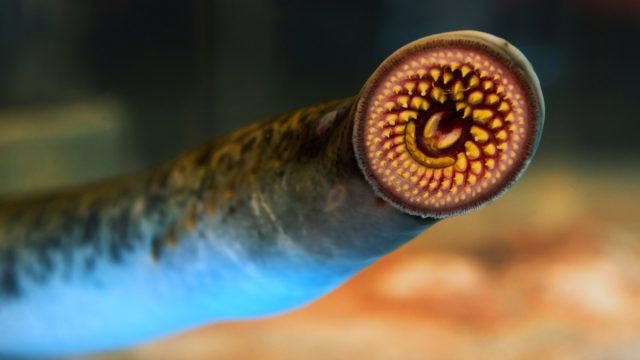
It’s known as the “vampire fish”—a long, eel-like parasite with a mouth like a circular vacuum attachment it applies to other fish to live off their blood and flesh. But not only do sea lampreys look and sound like something out of a horror movie, researchers are also using their bodies for a grisly sequel. “It’s like we’re making coffee. You’re passing a hot liquid over a solid and making lamprey coffee,” said Kandace Griffin, a Ph.D. student in the department of fisheries and wildlife at Michigan State, in Scientific American.
“We have a flask of solvent, and as that heats up, it’s going to evaporate. And then we’ll condense over the extractor body, which has our whole body sea lamprey, and then it will go back down onto the sea lamprey.” What’s the purpose of this macabre-seeming experiment? It’s actually to preserve a healthy ecosystem for fish in the Great Lakes. Read on to find out more.
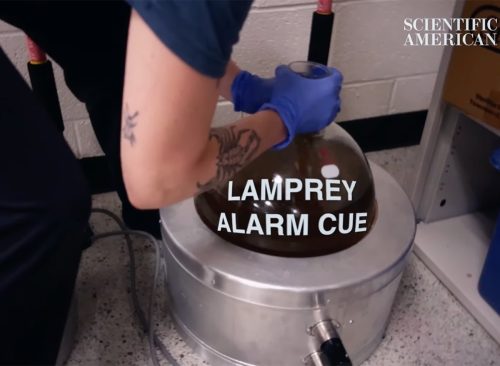
In essentially boiling and dissolving the lampreys alive, the researchers are extracting an “alarm cue” from the fish’s body. This is then used in experiments with other lampreys. “An alarm cue is a substance that warns other animals, typically of the same species, that a predator is around or attack has occurred,” said Griffin.
“So for sea lamprey, when their skin is abraided, they will release this cue into the water and other migrating sea lamprey you can smell it.” Keep reading to learn more and see the video.
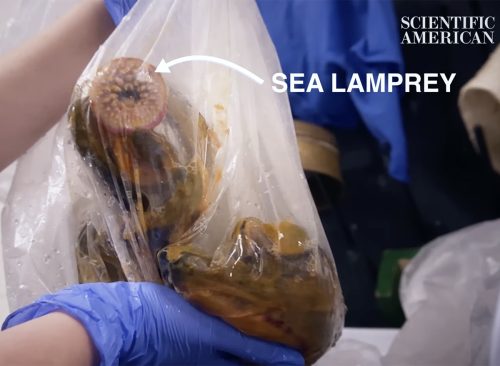
Michigan State scientists are looking into ways to control sea lamprey, particularly to drive them away and into certain areas. The researchers are releasing the “lamprey coffee” and then tracking how other lamprey respond.
“With the technology that we have, we will be able to tell are they changing their ground speed or are they changing their sinuosity?” said Griffin. “Are they taking a straighter path? Maybe we can push them towards a trap or push them towards an area of the river that is unsuitable for their spawning grounds, so maybe their eggs don’t survive. So then there’s fewer of them.”
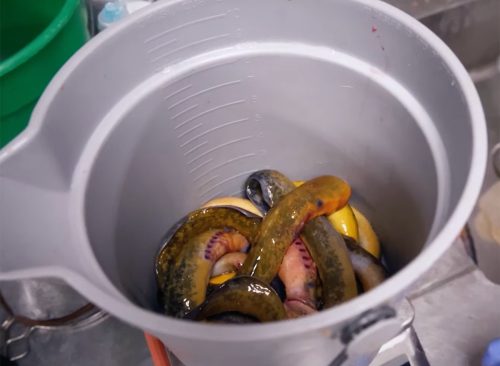
Sea lampreys are an invasive species that are a serious threat to Michigan’s $7 billion fishing industry. They attach themselves to fish and essentially subsist on their blood. An affected fish may die or be weakened—in either case rendered unfit for human consumption.
“Sea lampreys attach to fish with their suction cup mouth, then dig their teeth into flesh for grip,” the Great Lakes Fishery Commission explains. “Once securely attached, sea lampreys rasp through the fish’s scales and skin with their sharp tongue. Sea lampreys feed on the fish’s body fluids by secreting an enzyme that prevents blood from clotting, similar to how a leech feeds off its host.”
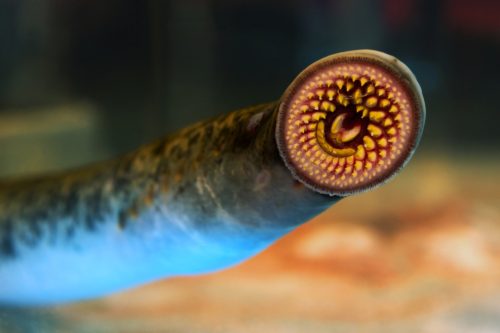
“In their native Atlantic Ocean, thanks to co-evolution with fish there, sea lampreys are parasites that typically do not kill their host,” says the Great Lakes Fishery Commission. “In the Great Lakes, where no such co-evolutionary link exists, sea lampreys act as predators, with each individual capable of killing up to 40 pounds (more than 20 kilograms) of fish over their 12 to 18 month feeding period.”
“Host fish in the Great Lakes are often unable to survive sea lamprey parasitism, either dying directly from an attack or from infections in the wound after an attack,” the agency says. “Host fish that survive an attack often suffer from weight loss and a decline in health and condition.”
RELATED: The 10 Most “OMG” Science Discoveries of 2022

Sea lampreys have been a menace in the Great Lakes for a century. Decades of effort have seen their population reduced by 98%, but the fish is so adept at reproducing that “the remaining 2% is enough to start the cycle all over again if left unchecked,” Great Lakes Now reports.
It costs $20 million a year to keep their numbers at current levels. The current techniques used to reduce sea lamprey include a pesticide called TFM, which is placed in areas where the lamprey reproduces. Its use is controversial because it may harm other fish. Physical barriers have also been used, but they can also affect other fish that are trying to spawn. So researchers have been developing “biopesticides” like the lamprey coffee, which work with lamprey-specific pheromones and alarm cues. This might lure lamprey into traps or areas that have been treated with a lamprey-targeted pesticide.














